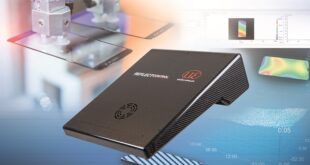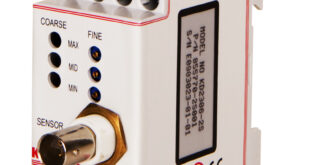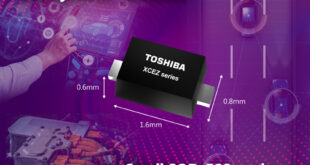Silicon Labs’ new EFM32TG11 Tiny Gecko MCUs provide a cost-effective, ultra-low-power solution for connected devices requiring long battery life and no compromises in features or security.
The Tiny Gecko 11 MCUs are ideal for smart meters, personal medical devices and home automation products with multiple sensors, local displays and touch controls.
The new MCUs can be used in IoT designs as standalone microcontrollers or with network coprocessors, giving developers exceptional design flexibility.
The Tiny Gecko 11 MCUs are optimised for battery-powered applications offering cloud connectivity through wireless access points, gateways and concentrators.
When paired with a Silicon Labs’ transceiver, SoC or module in many light-weight wireless applications, a Tiny Gecko 11 MCU can manage both the application code and wireless connectivity.
When used with sophisticated protocols such as 802.11 b/g/n Wi-Fi, the wireless system can be simplified by partitioning the Tiny Gecko 11 to solely manage the MCU application.
The Tiny Gecko 11 MCUs include sufficient memory, sensor interfaces, peripherals, communication links and on-chip security to support both wireless use cases, as well as standalone MCU applications.
Based on an ARM Cortex®-M0+ processor running at 48MHz, the Tiny Gecko 11 MCUs provide ample processing power while maintaining very high energy efficiency.
The MCUs combine low active current consumption (37 µA/MHz), fast wake-up times, a range of sleep modes (1.3 µA in deep sleep) and other architectural enhancements to enable secure, battery-powered IoT products requiring both high performance and low power consumption.
The Tiny Gecko 11 MCUs integrate an array of features that expand application possibilities:
* Advanced capacitive sense controller with wake-on-touch capability for applications requiring touch interfaces
* Low-energy sensor (LESENSE) interface for autonomous sensing in deep sleep modes
* Patented 8×32 segment LCD controller, reducing power consumption by up to 40%
* A CAN controller for industrial applications requiring wired connectivity
* Best-in-class hardware cryptography including AES, hash functionality (SHA), cyclical redundancy checks (CRC), an energy-efficient true random number generator (TRNG) and a security management unit (SMU), enabling fine-grained security for peripheral access
Software and pin-compatible with other EFM32 Gecko products, the new MCUs offer more flash memory (up to 128 kB) and RAM (up to 32 kB) than the previous Tiny Gecko generation, making it easier to develop feature-rich embedded applications supporting real-time operating systems (RTOS) such as Micrium OS.
 Engineer News Network The ultimate online news and information resource for today’s engineer
Engineer News Network The ultimate online news and information resource for today’s engineer





